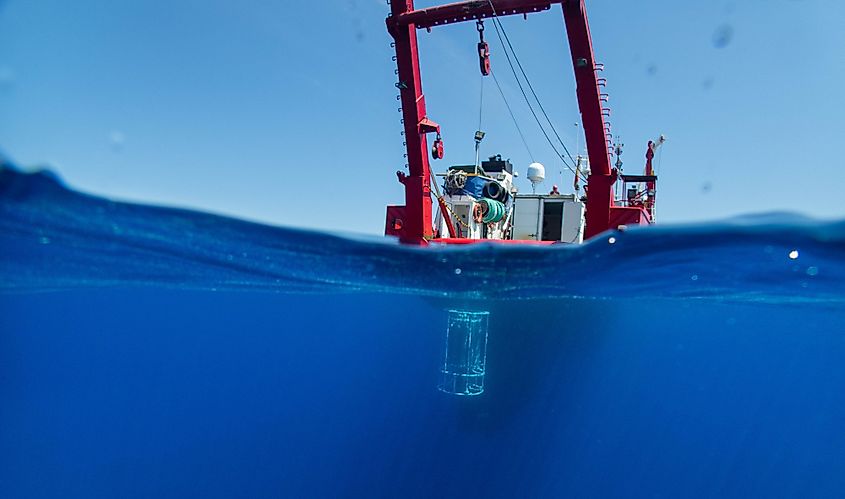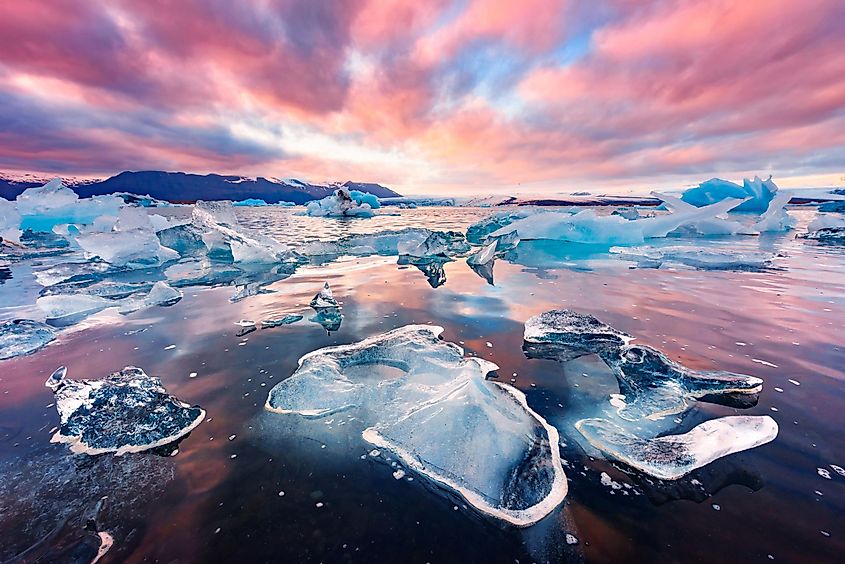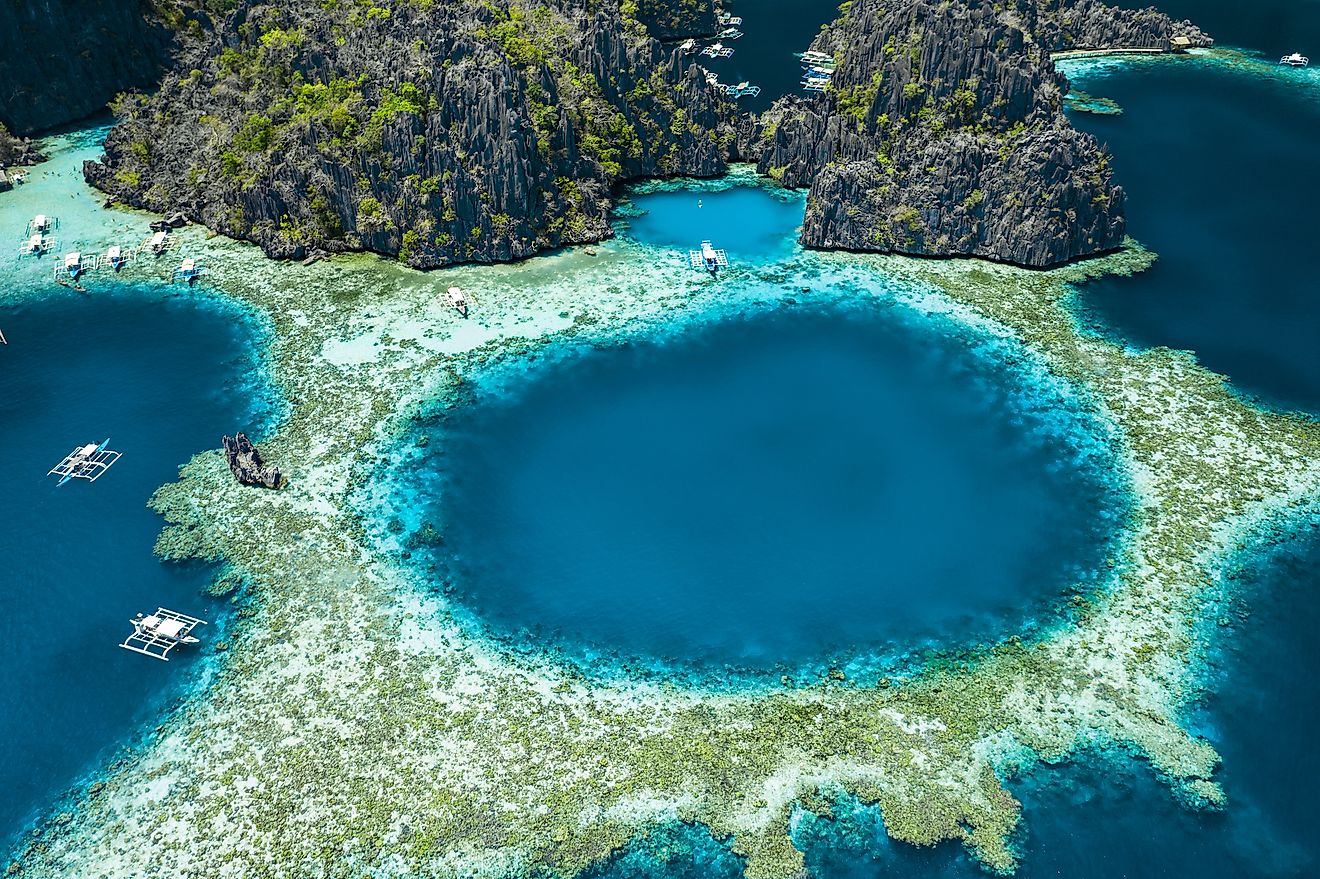
Which Ocean Is The Warmest?
- Ocean water temperature is important to understand, as it affects global climate and marine ecosystems.
- The Indian Ocean is the warmest in the world.
- Ocean surface temperatures have risen by about 1.6°F over the past 100 years, due to global warming.
Earth’s oceans cover about 71% of the planet’s surface and consist of five major basins: the Pacific, Atlantic, Indian, Southern, and Arctic. Collectively, they contain approximately 96.5% of all water on Earth, making them the dominant feature of the planet’s geography. These large bodies of water are essential for regulating temperature, absorbing and storing heat, and distributing it globally through currents. Ocean temperatures impact everything from seasonal weather patterns to long-term climate trends and help determine where marine species can live, feed, and reproduce. Therefore, understanding how warm each ocean is and why is crucial for gaining insight into the health and stability of both the global climate system and marine ecosystems.
Measurement of Ocean Surface Temperatures

Scientists monitor ocean surface temperatures to establish long-term records that help track warming trends and changes in marine and atmospheric conditions. Early measurements were taken from ships, using buckets or intake valves, but these methods produced inconsistent results because readings came from different depths. Over time, more reliable systems were introduced, including drifting and moored buoys, ARGO floats, and satellite sensors. Today, satellites measure the very top layer of the ocean, while instruments on buoys and floats collect temperature data from the surface down through the upper layers of the water column. Together, these tools provide a detailed picture of how ocean temperatures are changing over time.
Ocean Temperatures
1. Indian Ocean
The Indian Ocean is bordered by Asia to the north, Africa to the west, and Australia to the east, and it is the warmest ocean in the world. Sea surface temperatures typically range from about 72 to 82 degrees Fahrenheit (22 to 28°C), with cooler waters only in the far south of the basin. Because it does not connect to the Arctic Ocean, it receives very little cold polar water, which helps it stay warm year-round. These conditions support a variety of tropical marine ecosystems, and several areas, including the Arabian Sea and waters off East Africa, are important for commercial fishing.
- Size: about 27,240,000 square miles, including the Persian Gulf and the Red Sea.
- Depth: about 12,274 feet deep, on average. Its deepest point is 24,442 feet.
- Volume: about 63,000,000 cubic miles, which is about 19.8% of the Earth’s ocean volume.

Palau Islands, Pacific Ocean. Image credit: BlueOrange Studio/Shutterstock
2. Pacific Ocean
The Pacific Ocean is the second warmest ocean and supports an enormous share of the world’s marine life. Recent global fisheries data shows that the Pacific accounts for about 58 percent of all wild-caught fish, making it the most productive ocean on Earth. Sea surface temperatures across much of the basin range from about 70 to 80 degrees Fahrenheit (21 to 27°C). Near the northern and southern edges of the ocean, temperatures drop sharply and can reach about 28 degrees Fahrenheit (-2°C), reflecting the Pacific’s broad span from tropical to polar regions.
- Size: it occupies about 63,800,000 square miles of the Earth’s surface, making it the largest ocean in the world
- Depth: on average, about 14,040 feet. Its deepest point is the Mariana Trench at 36,201 feet, which is the greatest depth found on Earth.
- Volume: about 171,000,000 cubic miles, or over 30% of the Earth's surface.
3. Atlantic Ocean
The Atlantic Ocean covers about 20 percent of Earth’s surface and holds close to 29 percent of the planet’s ocean water. Its temperatures are generally cooler than those of the Pacific because the Atlantic is directly connected to the Arctic Ocean and receives more cold water from the north. Surface temperatures range from about 28 degrees Fahrenheit (-2°C) in the far northern and southern regions to more than 84 degrees Fahrenheit (29°C) in the warm waters near the Equator.
- Size: about 41,100,000 square miles.
- Depth: about 10,925 feet deep, on average. The deepest point is 27,840 feet, at the Puerto Rico Trench.
- Volume: 74,471,500 cubic miles.
4. Southern Ocean
The Southern Ocean surrounds Antarctica and contains some of the coldest waters on the planet. Temperatures near the continent are close to the freezing point of seawater, while the sub-Antarctic regions farther north are slightly warmer. Overall, surface temperatures in the Southern Ocean range from about 28 to 50 degrees Fahrenheit (-2 to 10°C).
- Size: about 7,849,000 square miles.
- Depth: between 13,000 and 16,000 feet. The deepest point is the South Sandwich Trench at 23,740 feet.
- Volume: 17,225,736 cubic miles.

The Arctic Ocean. Image credit: Smit/Shutterstock
5. Arctic Ocean
The Arctic Ocean is the coldest ocean on Earth, with average surface temperatures close to 28 degrees Fahrenheit. It is also the smallest of the world’s oceans. In recent years, the Arctic has been warming much faster than the global average, a trend known as Arctic amplification that has major implications for sea ice, weather patterns, and marine ecosystems.
- Size: about 5,427,000 square miles.
- Depth: 3,406 feet on average. Its greatest depth is 18,210 feet at the Molloy Hole in the Farm Strait.
- Volume: 4,498,364 cubic miles.
Impacts of Global Warming on Oceans
Rising ocean temperatures are one of the clearest indicators of global warming. According to the National Oceanic and Atmospheric Administration, the average temperature of the ocean surface has increased by about 1.6 degrees Fahrenheit over the past century. Warmer oceans contribute to sea level rise and influence climate patterns around the world, affecting rainfall, storm activity, and the distribution of heat across the planet. These changes place additional pressure on marine ecosystems and coastal environments. Long-term monitoring shows that ocean warming continues to accelerate, making it an important focus of climate research.











